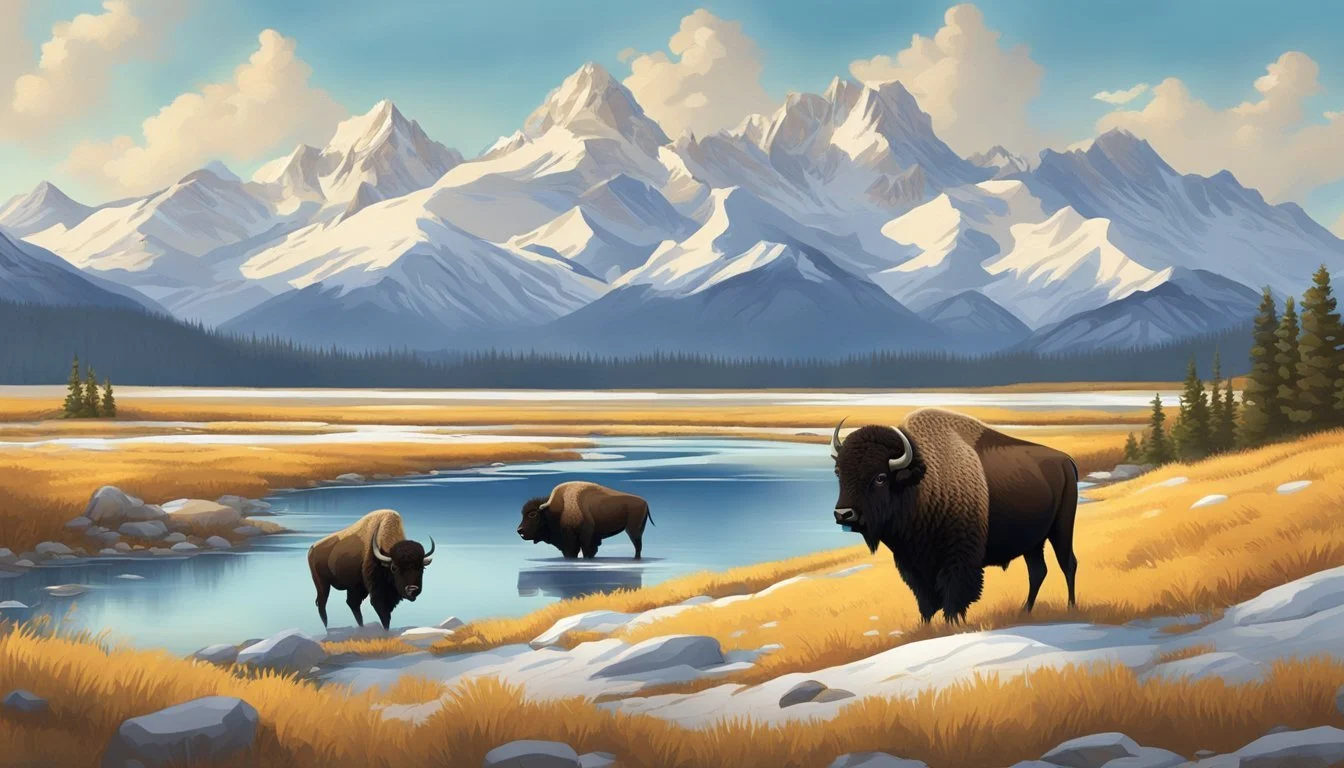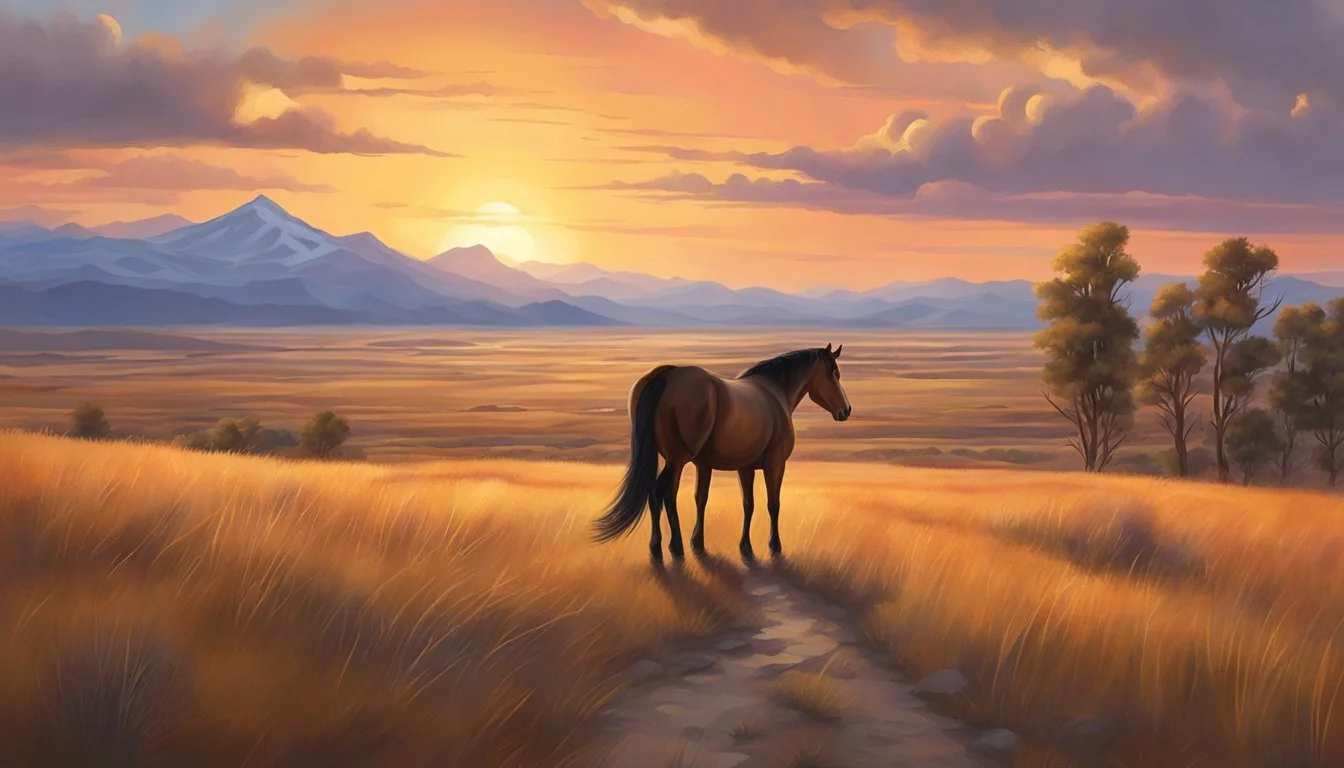8 Engaging Documentaries About Montana
Exploring Big Sky Country's Rich Heritage
Montana's rugged landscapes and rich history have captivated filmmakers for decades. From towering mountains to sprawling prairies, the Treasure State offers a diverse backdrop for compelling documentaries that explore its natural wonders, cultural heritage, and unique stories.
Documentaries about Montana provide viewers with an immersive journey into the state's past and present, offering insights into its wildlife, Native American culture, mining history, and more. These films showcase the beauty and complexity of Montana, giving audiences a deeper appreciation for this remarkable corner of the American West. Through stunning visuals and thought-provoking narratives, these documentaries bring Montana's essence to life on screen.
1) The Last Cowboys of Montana
Montana's rugged landscape has long been home to iconic cowboys. Today, a dwindling number of these traditional ranchers still work the land, preserving a vanishing way of life.
John Hoiland exemplifies this enduring cowboy spirit. At 92 years old, he single-handedly runs his expansive Montana ranch, resisting pressure to sell his property to wealthy buyers.
The documentary "John: The Last Norwegian Cowboy" profiles Hoiland's remarkable story. Directed by Frode Fimland, the film showcases the cowboy's commitment to his land and lifestyle.
Hoiland's tale resonates as a poignant reminder of Montana's ranching heritage. His dedication to hard work and self-sufficiency embodies core values of the American West.
Other documentaries have also explored Montana's cowboy culture. These films capture the state's unique ranching traditions and the challenges faced by modern-day cowboys.
As urban development encroaches on rural areas, these documentaries serve as important historical records. They preserve the legacy of Montana's cowboys for future generations to appreciate and learn from.
2) Winter in the Blood
"Winter in the Blood" is a compelling film adaptation of James Welch's landmark 1974 novel. Set in Montana's Hi-Line region, the movie tells the story of a 30-something Native American man grappling with his identity and personal struggles.
The film, directed by Alex and Andrew Smith, began shooting in Chinook, Montana in August. It garnered attention from both the national Native American community and Hollywood.
Chaske Spencer stars as the protagonist, portraying an alcoholic Blackfoot Indian man whose wife has left him. The narrative unfolds against the backdrop of Montana's vast landscapes, capturing the beauty and harshness of the region.
"Winter in the Blood" premiered in Livingston, Montana, drawing a large audience despite its challenging themes. The film explores issues of alcoholism, identity, and the Native American experience in Montana.
The movie's production received support from then-Governor Brian Schweitzer, highlighting its significance to Montana's cultural landscape. It represents an important contribution to Native American storytelling in cinema, bringing Welch's influential novel to the screen.
3) Montana Roadtrip: Under the Big Sky
"Under the Big Sky" is a documentary series that showcases the diverse people, businesses, and stories found across Montana. The series takes viewers on a virtual road trip through the state, exploring its unique landscapes and communities.
Each episode features different segments highlighting interesting individuals and places that capture the essence of Montana. From ranchers and artists to small-town entrepreneurs, the series paints a vivid picture of life in Big Sky Country.
The documentaries are produced by the Montana Television Network and are available on YouTube and Vimeo. They offer an intimate look at the state's culture, history, and natural beauty.
Viewers can experience Montana's stunning scenery, from the towering peaks of Glacier National Park to the rolling plains of the eastern part of the state. The series also explores the state's rich Native American heritage and its ties to the Lewis and Clark expedition.
"Under the Big Sky" provides an authentic portrayal of Montana's diverse communities and the people who call them home. It serves as both an educational resource and a visual journey through one of America's most picturesque states.
4) Unbranded
"Unbranded" is a captivating documentary that follows four young cowboys on an epic 3,000-mile journey across the American West. The film showcases the rugged beauty of Montana's landscapes as part of their adventurous route from Mexico to Canada.
The protagonists adopt and train 16 wild mustangs for their trek, bringing attention to the plight of these horses in government holding facilities. Their journey highlights the challenges faced by both riders and animals in traversing diverse terrains.
Directed by Phillip Baribeau, the documentary offers stunning visuals of Montana's varied landscapes, from rolling plains to the Rocky Mountains. It explores themes of conservation, wild horse management, and the spirit of the American West.
"Unbranded" not only entertains but also educates viewers about important environmental and wildlife issues. The film has garnered critical acclaim and awards for its innovative approach to storytelling and conservation awareness.
Through its portrayal of Montana's natural beauty and the bonds formed between humans and horses, "Unbranded" offers a unique perspective on the state's wilderness and cultural heritage.
5) Lost in Montana
"Lost in Montana" is a gripping documentary that explores the challenges of wilderness survival in the rugged terrain of Big Sky Country. The film follows the true story of a group of hikers who became disoriented during a backcountry expedition in Glacier National Park.
Directed by Sarah Thompson, the documentary combines reenactments with interviews of the survivors and rescue team members. It provides a harrowing account of the six days the hikers spent lost in the wilderness, facing harsh weather conditions and wildlife encounters.
The film showcases Montana's breathtaking landscapes while highlighting the potential dangers that come with exploring its vast wilderness areas. It emphasizes the importance of proper preparation and safety measures for outdoor enthusiasts.
"Lost in Montana" also sheds light on the state's search and rescue operations, detailing the extensive efforts undertaken to locate and save lost hikers. The documentary serves as both a cautionary tale and a testament to human resilience in the face of nature's challenges.
6) Blueberry Soup
"Blueberry Soup" is a thought-provoking documentary that explores Montana's culinary heritage and the importance of wild berries in local cuisine. The film showcases the annual tradition of huckleberry picking in the state's mountainous regions.
Directed by Montana native Sarah Johnson, the documentary follows several families as they embark on their summer berry-picking expeditions. It highlights the cultural significance of this activity and its role in preserving Montana's connection to the land.
The film delves into the history of huckleberries in Native American cultures and their continued importance in modern Montana life. It features interviews with local chefs, foragers, and food historians who share insights on the unique flavor profile of these wild berries.
"Blueberry Soup" also addresses the environmental challenges facing wild berry populations due to climate change and habitat loss. The documentary explores conservation efforts aimed at protecting these valuable natural resources for future generations.
Through stunning visuals of Montana's landscapes and intimate portraits of its residents, the film captures the essence of the state's relationship with its wild edibles. It serves as a celebration of Montana's natural bounty and the communities that cherish it.
7) On the Trail of Genghis Khan
"On the Trail of Genghis Khan" is a captivating documentary series that follows Australian adventurer Tim Cope on an epic journey. The series chronicles Cope's 10,000-kilometer solo horseback expedition across the Eurasian steppe.
Cope's route traces the path of nomadic peoples and replicates the journey taken by Genghis Khan's Mongol armies. The adventure begins in Karakorum, the former Mongol capital, and concludes at the Danube River.
Throughout his travels, Cope traverses Mongolia, Kazakhstan, Russia, Ukraine, and Hungary. The documentary provides viewers with stunning visuals of vast landscapes and insights into the cultures of the steppe.
While not specifically about Montana, this series offers a unique perspective on nomadic life and historical migrations. It showcases the enduring legacy of Genghis Khan and the peoples of the Eurasian steppes.
The documentary blends adventure, history, and cultural exploration. It presents a modern-day odyssey that connects viewers to the ancient world of nomadic empires and their far-reaching influence.
8) White Earth
"White Earth" offers a poignant glimpse into life on the White Earth Reservation in Minnesota. This documentary explores the challenges faced by Native American communities in the region.
The film focuses on the experiences of residents, showcasing their daily lives and struggles. It highlights the importance of traditional activities like fishing and gathering leeches for bait.
"White Earth" also touches on the complex issue of drug dealing within the reservation. It presents a nuanced portrayal of how some individuals turn to selling substances like methamphetamine and marijuana.
The documentary provides insight into the interactions between the reservation's inhabitants and nearby non-Native communities. It sheds light on the economic and social dynamics at play in this unique setting.
Through stunning visuals and intimate storytelling, "White Earth" captures the essence of life in this part of Minnesota. The film offers viewers a rare opportunity to understand the realities of modern reservation life.
The Significance of Montana in Documentaries
Montana's rich history, diverse landscapes, and unique cultural heritage make it a compelling subject for documentary filmmakers. The state's untamed wilderness and pivotal role in American expansion have inspired numerous cinematic explorations.
Historical Context and Influence
Montana's past is deeply intertwined with significant events in American history. The state played a crucial role in the westward expansion, with the Lewis and Clark expedition traversing its territory. Documentaries often focus on this pivotal journey, exploring its impact on the region's development.
The gold rush era also features prominently in Montana-focused films. Boomtowns like Butte became epicenters of mining activity, attracting fortune seekers from around the world. These stories of rapid growth and eventual decline offer filmmakers rich material for exploring themes of ambition, community, and environmental impact.
Native American history forms another essential aspect of Montana documentaries. Films examine the complex relationships between indigenous tribes and European settlers, shedding light on cultural clashes and resilience.
Unique Landscapes and Wildlife
Montana's diverse terrain provides a stunning backdrop for documentary filmmakers. The state's vast prairies, towering mountains, and pristine wilderness areas offer visually captivating settings for exploring environmental themes.
Yellowstone National Park, partially located in Montana, is a frequent subject of nature documentaries. Its geothermal features and diverse wildlife populations attract filmmakers interested in capturing the raw beauty of the natural world.
Montana's rivers and forests also feature prominently in environmental documentaries. These films often explore conservation efforts and the delicate balance between human activity and ecosystem preservation.
The state's changing seasons provide opportunities for filmmakers to document dramatic transformations in the landscape. From snow-capped peaks to wildflower-filled meadows, Montana's natural beauty offers year-round inspiration for visual storytelling.
Impact of Documentaries on Tourism
Documentaries about Montana have significantly influenced tourism in the state. They showcase the region's natural beauty, cultural heritage, and unique attractions, drawing viewers to experience Montana firsthand.
Cultural and Economic Aspects
Montana's tourism industry has seen substantial growth due to documentary exposure. Films like "A River Runs Through It" sparked interest in fly fishing, leading to increased visitors in areas featured in the movie. This influx of tourists has boosted local economies, creating jobs in hospitality, guiding services, and retail.
Small towns have transformed into popular destinations, with new businesses catering to tourists' needs. However, this growth has also brought challenges. Some communities face pressure on infrastructure and natural resources due to the surge in visitors.
Enhancing Public Awareness
Documentaries have raised awareness about Montana's diverse ecosystems and conservation efforts. They highlight the state's national parks, wildlife, and unique geological features, educating viewers about the importance of preserving these natural wonders.
These films often explore Montana's rich Native American heritage, promoting cultural tourism and fostering respect for indigenous traditions. By showcasing sustainable tourism practices, documentaries encourage responsible travel behavior among visitors.
They also shed light on lesser-known attractions, helping distribute tourism benefits more evenly across the state. This increased awareness has led to more support for local conservation projects and cultural preservation initiatives.









